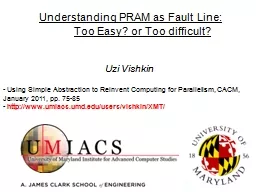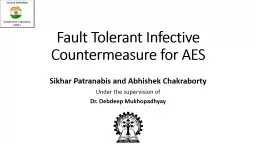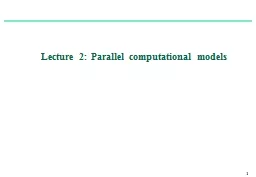PPT-Understanding PRAM as Fault Line:
Author : pasty-toler | Published Date : 2016-06-20
Too Easy or Too difficult Uzi Vishkin Using Simple Abstraction to Reinvent Computing for Parallelism CACM January 2011 pp 7585 httpwwwumiacsumdeduusersvishkinXMT
Presentation Embed Code
Download Presentation
Download Presentation The PPT/PDF document "Understanding PRAM as Fault Line:" is the property of its rightful owner. Permission is granted to download and print the materials on this website for personal, non-commercial use only, and to display it on your personal computer provided you do not modify the materials and that you retain all copyright notices contained in the materials. By downloading content from our website, you accept the terms of this agreement.
Understanding PRAM as Fault Line:: Transcript
Download Rules Of Document
"Understanding PRAM as Fault Line:"The content belongs to its owner. You may download and print it for personal use, without modification, and keep all copyright notices. By downloading, you agree to these terms.
Related Documents














